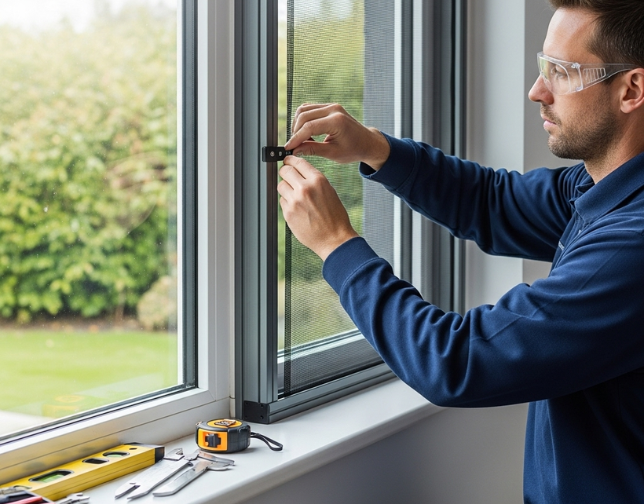How to Choose the Best Bird Spikes for Your Building
- malik tanveer
- Oct 21
- 4 min read

When birds start roosting and nesting on buildings, they can rapidly turn into a nuisance even if they are usually a pleasant sight in the outdoors. Their droppings have the potential to harm structures, discolour surfaces, and spread illnesses. Installing bird spikes is one of the most efficient and considerate ways to stop birds from perching on window sills, rooftops, and ledges. But not every bird spikes is made equally. Selecting the appropriate kind for your structure is crucial for both long-term security and visual appeal.
Understanding the Purpose of Bird Spikes
Before selecting the best bird spikes, it is important to understand what they are designed for. Bird spikes are physical deterrents made of metal or plastic that prevent birds from landing or roosting on surfaces. They don’t harm the birds but create an uneven surface that makes perching uncomfortable or impossible. These spikes can be installed on various parts of a building, such as rooflines, beams, parapets, signs, and window ledges. Their primary goal is to maintain a bird-free environment while preserving the integrity and cleanliness of the building.
Assessing the Bird Problem
Finding the kind and size of birds that are the problem is the first step in selecting the appropriate bird spikes. Different spike patterns are needed for different bird species. Larger birds like pigeons, seagulls, and crows, for instance, require spikes that are taller and wider, whilst smaller birds like sparrows could need spikes that are closer together. Smaller birds may still be able to land if you select spikes that are too short or too far separated. Consequently, assessing the particular bird issue guarantees that you select spikes that successfully solve it.
Material Matters: Plastic vs. Stainless Steel
One of the main decisions when selecting bird spikes in dubai is choosing between plastic and stainless steel materials. Each has its benefits and is suitable for different environments.
Plastic bird spikes are lightweight, cost-effective, and resistant to UV rays, making them ideal for areas exposed to direct sunlight. They are also non-conductive, which means they can safely be installed on electrical equipment or ledges near power lines. However, they might not be as durable in harsh weather conditions.
Stainless steel bird spikes, on the other hand, are more robust and long-lasting. They can withstand extreme weather, from intense heat to heavy rain, without rusting or bending. Although they may cost more initially, they are a better investment for long-term protection, especially for larger buildings or coastal areas exposed to salt and humidity.
Measuring and Planning Installation Areas
Proper measurement and planning are essential for effective installation. Before purchasing bird spikes, measure the width and length of the ledges or surfaces where birds tend to perch. The spikes should cover the entire surface without leaving any gaps, as even a small space can allow birds to land.
If you are covering a large roof or beam, consider modular spike strips that can be easily cut or connected to fit the desired length. Choosing spikes with a flexible base can also help them adapt to curved or uneven surfaces, ensuring a secure fit and consistent coverage.
Aesthetic Considerations
While functionality is key, the appearance of bird spikes should not be overlooked, especially for commercial buildings or residential properties with architectural value. Some spikes are designed to blend in with the building’s design, available in transparent or color-matched options. Transparent polycarbonate spikes, for example, are nearly invisible from a distance, maintaining the building’s visual appeal. Stainless steel spikes, though more visible, can offer a sleek and professional look that complements modern architecture.
Weather Resistance and Durability
Since bird spikes are usually installed outdoors, they must withstand various weather conditions. Look for spikes that are UV-resistant, corrosion-proof, and capable of handling both high and low temperatures. In humid or coastal regions, stainless steel is often the preferred material due to its resistance to rust and corrosion. For dry and sunny environments, UV-treated plastic spikes can provide reliable protection without discoloration or brittleness over time.
Ease of Installation and Maintenance
The ease of installation and maintenance of the spikes is another crucial consideration. For easy and rapid installation, a lot of contemporary bird spike systems include adhesive options or pre-drilled holes. Depending on the surface, you can use clips, silicone adhesive, or screws to secure them. Simply checking for debris accumulation and making sure the spikes are still firmly attached constitute routine maintenance. Once installed correctly, quality spikes require little maintenance.
Cost Versus Long-Term Value
While budget considerations are important, the cheapest option is not always the most cost-effective in the long run. Low-quality spikes may break, rust, or lose effectiveness quickly, leading to frequent replacements. Investing in high-quality bird spikes from reputable brands ensures long-term durability and better protection for your property. In the long term, durable spikes save money by reducing maintenance costs and preventing damage caused by birds.
Conclusion
Selecting the best bird spikes for your building involves balancing several factors, including bird species, materials, durability, and aesthetics. Stainless steel spikes offer superior longevity and strength, while plastic spikes provide a budget-friendly and discreet option. By accurately assessing your bird problem and choosing spikes suited to your environment, you can maintain a clean, bird-free property without compromising on appearance or safety. A thoughtful choice today ensures years of effective bird control and peace of mind for your building’s occupants and visitors.


Comments